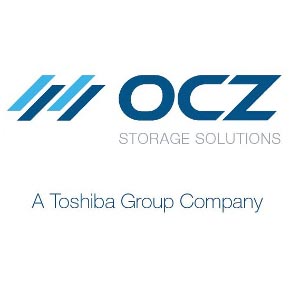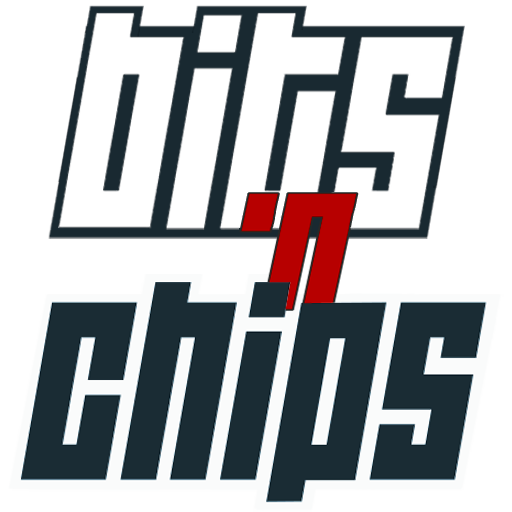Seiichi Mori, VP of Toshiba's Storage Company and Corporate Vice President of Toshiba, e Ralph Schmitt, CEO of OCZ Storage Solutions, in una breve serie di domande e risposte hanno messo in chiaro perché OCZ è rimasta un'entità indipendente, dopo la sua acquisizione da parte di Toshiba, e come quest'ultima voglia differenziarsi dalla propria sussidiaria.

D: Seiichi, perché Toshiba non ha assorbito OCZ, permettendole invece di continuare ad essere un'entità indipendente (un approccio alla “Divide et Impera”?)?
SM: OCZ è una compagnia che è riuscita a costruirsi delle solide capacità nella Ricerca e Sviluppo, nella produzione, nella commercializzazione e nella vendita degli SSD, in ogni area. Questa è la forza del marchio OCZ, oggi, nel mercato degli SSD. È quindi importante per noi mantenere intatti sia il team dietro a ciò sia le sue capacità, ed al contempo cercare di capire dove possiamo migliorare, usufruendo dell'aiuto di Toshiba.
D: Quali sono state le motivazioni che vi hanno portato ad acquistare OCZ? La possibilità di acquisire menti brillanti o le tecnologie?
SM: Le nostre motivazioni sono state guidate dal nostro interesse sia per le persone che vi lavorano sia per le tecnologie che ci sarebbero state portate in dote, e che hanno creato il mercato di OCZ. La compagnia, sotto una guida sapiente, e grazie ad un talentuoso team di sviluppo, ha saputo creare dei prodotti SSD al top. Noi vogliamo unire quanto di meglio può offrire questo team con la nostra tecnologia relativa alle NAND Flash, così che entrambi ne possiamo beneficiare.
D: Siete sicuri che non verranno a crearsi sovrapposizioni tra i due marchi, soprattutto per i prodotti SSD di fascia consumer ed enterprise?
SM: Il mercato SSD di OCZ è complementare a quello di Toshiba in entrambi i settori, così come i canali di vendita dei rispettivi prodotti, con una leggera sovrapposizione, attualmente. Stiamo procedendo a piccoli passi per eliminare questa sovrapposizione con i futuri prodotti, così da migliorare la nostra risposta a quanto il mercato richiede.
D: Dove lo vedete il mercato degli SSD consumer nei prossimi anni? Potremmo assistere allo stesso percorso che abbiamo visto nel mercato degli HDD tradizionali (acquisizioni e fallimenti)?
SM: Al contrario degli HDD, per la natura stessa delle NAND Flash, gli SSD hanno poche limitazioni per quanto riguarda sia le dimensioni sia per quanto concerne l'implementazione di diverse soluzioni tecniche. A parte le memorie USB, le memory card, gli smartphone ed i tablet, la maggior parte dei sistemi sono ancora limitati da un design di vecchia concezione, in quanto sono studiati per essere utilizzati con gli HDD tradizionali. Gli SSD sono solamente uno tra i tanti form factor disponibili. Molte compagnie stanno studiando soluzioni a questo problema, e molte altre si aggregheranno. Credo che l'esperienza di OCZ maturata durante l'iniziale crescita del mercato degli SSD ci sarà molto utile per capire dove investire.
D: Potresti spiegarci cosa dobbiamo aspettarci dalle vostre prossime roadmap? Cosa troveranno sul mercato, sia per il mercato consumer, sia per il mercato enterprise, i vostri clienti nei prossimi dodici mesi?
RS: Per quanto riguarda il mercato consumer, lanceremo a breve un nuovo driver basato su memorie TLC, mentre per il mercato enterprise assisterete al rilascio di una nuova serie di SSD su slot PCI-E. Rilasceremo, inoltre, la terza generazione di drive basati sulla tecnologia Non-Volatile Memory (NVMe) nel formato da 2,5“, dei drive M.2 e diversi altri prodotti in altri formati.
D: I dischi basati su NAND Flash TLC stanno avendo un grande successo nelle fasce di mercato più economiche, possiamo quindi aspettarci la commercializzazione da parte di OCZ di SSD con questo tipo di memorie nel prossimo futuro?
RS: Sì, e sarà a breve. È un prodotto che abbiamo realizzato in collaborazione con Toshiba Client SSD Group, e dovrebbe vedere la commercializzazione il prossimo mese. Sebbene non giocherà un ruolo fondamentale per quanto concerne i nostri prodotti dedicati alle fasce performance, completerà comunque la nostra offerta. È importante per noi fornire ai nostri distributori un prodotto dagli elevati volumi di vendita.
D: Seiichi, why didn't Toshiba absorb OCZ rather than allowing it to sit as a standalone entity (divide and conquer approach?)
SM: OCZ is a company who has built up capabilities in R&D, manufacturing, marketing and sales of SSD products with strengths in each area. This is the backbone of the strong OCZ brand known today in the SSD space. It was important for us to keep the team and their capabilities intact while identifying areas where improvements can be made with the integration with Toshiba.
D:What were the primary motivations for acquiring OCZ? Was there a focus on bringing in the talent or the technology?
SM: Our motivations had been driven by our interest in acquiring the unique talents and technology which has created the OCZ business. The company, under talented management, functions as an efficient team to develop, manufacture and sell leading edge SSD products. We wanted to combine this team into our leading NAND business team for the benefit of both teams.
D: How are you making sure that there's no overlap between the two brands especially as both address consumer and enterprise SSDs?
SM: The SSD business of OCZ is very supplemental to Toshiba in both product lines and the channels in which the products are delivered to the end customer, with only a small overlap currently. We are taking steps to further reduce the overlap for future development to better improve our efficiency to meet market needs.
D: Where do you see the consumer and business SSD markets heading over the next few years? The same trajectory as HDDs with consolidations and bankruptcies?
SM: Unlike HDDs, due to the nature of NAND Flash, solid-state storage systems have very little limitations in form factors as well as opening up possibilities for system architecture. Aside from USB memory, memory cards, smart phones and tablets, the vast majority of systems are still limited by the legacy design and architecture which had used HDD as the primary storage for years. SSD is also one such form factor. Many companies have started to address these issues and I expect many more will follow. I believe OCZ's experience in leading the initial phase of SSD market creation will be valuable for us to address these moves in the market going forward.
D: Can you tell us anything else about what is coming down the roadmap? What can customers on both sides, client and enterprise, expect over the next twelve months?
RS: The client news will be the launch of a TLC drive, and for enterprise we will be releasing a series of new PCIe drives. You will also see Gen 3 NVME based drives in a 2.5 inch, M.2 and edge card form factors.
D: The competition has had a lot of success with TLC based SSDs for the value market, can we expect to see a TLC drive from OCZ in the near future?
RS: Yes, and it can't happen fast enough. This is a drive we have partnered with the Toshiba Client SSD group and expect to release in the coming months. While it will not play directly into our performance oriented strategy, it does round out our client portfolio. This is something that is important to our channel partners as it drives further volume.
